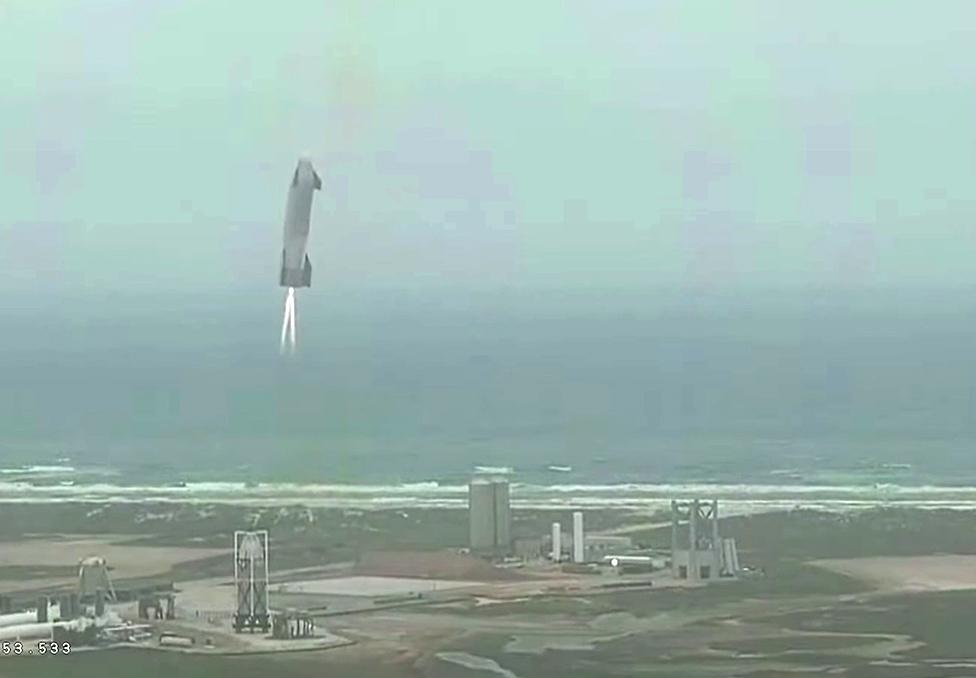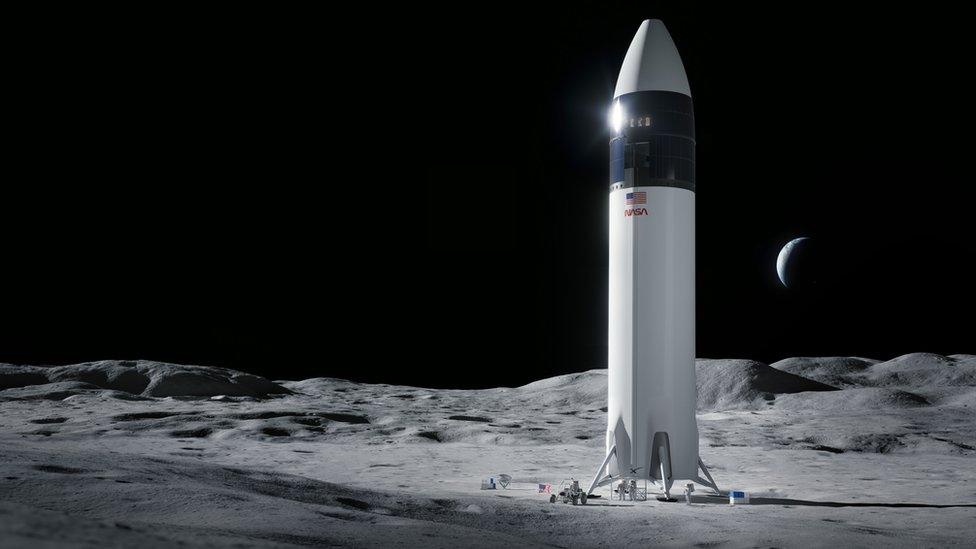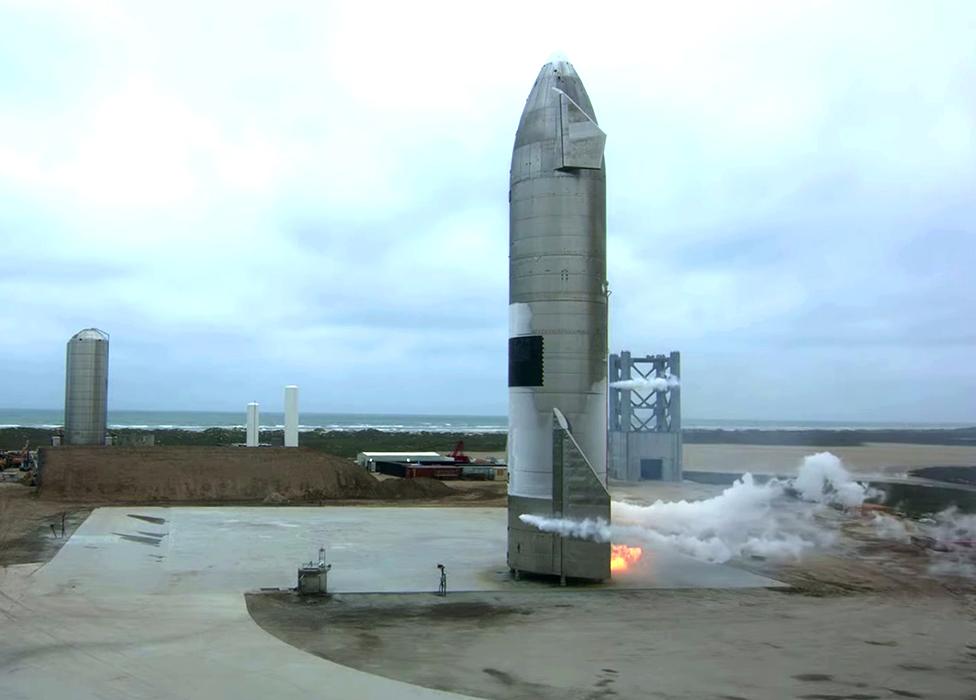SpaceX Starship prototype makes clean landing
- Published
SN15 launched with improvements in its structures, avionics, software, and engines
Step by step, the SpaceX company is progressing the development of its novel Starship rocket.
The latest prototype, Serial Number 15 (SN15), has just completed a successful high-altitude ascent and landing.
The four previous test artefacts all ran into trouble as they went through their touchdown manoeuvres, ultimately destroying themselves in the process.
But SN15 had no such difficulty, making a tidy, controlled return to the ground at SpaceX's R&D facility in Texas.
A small fire licked around the base of the vehicle on touchdown but was soon extinguished.
There's considerable interest in the Starship concept now that the American space agency (Nasa) has chosen it to land astronauts on the Moon later this decade.

The Starship prototype approached the ground with the thrust of two Raptors
For SpaceX, lunar missions would be just one application of many for the new system.
The expectation is that Starships will replace the company's Falcon rockets.
These existing vehicles carry out regular missions - both crewed and uncrewed - for Nasa, as well as satellite deployments for the US military and other commercial operators.
But SpaceX CEO, Elon Musk, believes the new 50m-tall Starship can do it all, bigger and better - and not just at Earth; he says the technology will get people to Mars.

Artwork: A vehicle based on Starship has been selected to land Nasa astronauts on the Moon
Wednesday's test proceeded much like the previous prototype flights.
The uncrewed SN15 left its launch mount at the Boca Chica facility, and rose vertically on the thrust of three methane-burning Raptor engines.
These power units shut down in sequence as the target height of roughly 10km (6.2 miles) was approached, with the vehicle then leaning over into the horizontal for the drop to the ground.
This belly-flop descent, controlled by large flaps at either end of the vehicle, is intended to simulate how future, operational Starships will re-enter the Earth's atmosphere from orbit, presenting a large surface area to the direction of travel to scrub off speed.

A small fire persisted for a while at the base of the vehicle
The vehicle is supposed to transition back to a tail-down configuration just before reaching the surface.
SN8, SN9, SN10 and SN11 couldn't manage the process cleanly and were destroyed just before, at, or shortly after the moment of touchdown.
SN15, in contrast, made a perfect flip back to the vertical and set itself down gently on its stubby legs.
SpaceX has more prototypes in various stages of readiness. It is iterating the design, making upgrades as engineers learn how to build and fly the rockets.
Operational Starships will eventually launch atop a booster called Super Heavy.
This will feature perhaps 28 Raptors, producing more than 70 meganewtons (16 million lbs) of thrust - about double that of the mighty Apollo Saturn 5 rocket, which sent men to the Moon.

